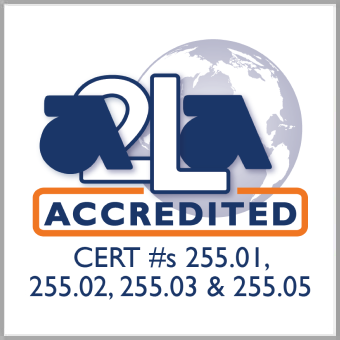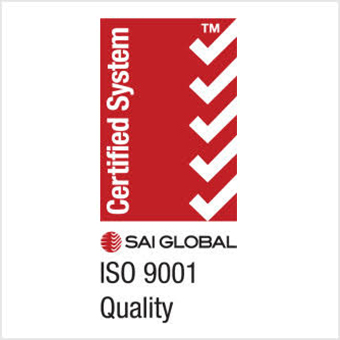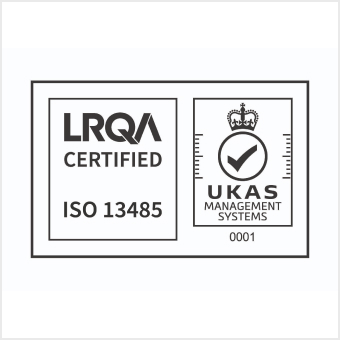DIN ISO 1817
1. Introduction to DIN ISO 1817
DIN ISO 1817 is an international standard that provides the methodology for determining the effects of liquids on rubber materials, specifically vulcanized or thermoplastic rubber. The full title of the standard is “Rubber, Vulcanized or Thermoplastic – Determination of the Effect of Liquids”. It was developed by the International Organization for Standardization (ISO) and is widely used to evaluate the compatibility and performance of rubber components when exposed to various liquids such as oils, fuels, solvents, and water.
The testing outlined in DIN ISO 1817 is crucial in industries such as automotive, manufacturing, construction, aerospace, and more, where rubber components are exposed to liquids during their service life. The standard specifies the necessary conditions for testing and the procedures used to assess the physical and mechanical properties of rubber materials after exposure to these liquids.
2. Purpose and Scope
The purpose of DIN ISO 1817 is to assess the changes in the properties of rubber when exposed to various liquids over time. This helps determine whether a rubber material is suitable for a specific application where it will come into contact with oils, fuels, water, solvents, or other chemicals. It provides important data on:
- Chemical resistance: Understanding how a rubber material behaves when in contact with different chemicals and liquids.
- Physical degradation: Assessing changes in properties like hardness, tensile strength, elongation, swelling, and mass change after exposure to liquids.
- Durability: Estimating the long-term reliability of rubber components in their working environments.
The standard covers all rubber types, both vulcanized and thermoplastic, ensuring its applicability to a wide range of industries that use rubber in different forms.
3. Overview of the Testing Process
DIN ISO 1817 specifies several testing methods that simulate the exposure of rubber components to various liquids. These tests help determine how the material changes in terms of its physical properties, which directly impacts its performance and reliability in real-world applications. The test procedures focus on the following aspects:
- Sample Preparation: Rubber specimens are prepared according to specified dimensions, typically in the form of strips, slabs, or other defined shapes. The sample is cleaned and, in some cases, pre-conditioned before exposure to liquids.
- Exposure to Liquids: The prepared rubber specimens are immersed in selected liquids for a specified time period, often under controlled temperature conditions. The choice of liquid depends on the intended application and potential exposure during the material’s use.
- Evaluation: After exposure, the specimens are evaluated for changes in mechanical and physical properties. These evaluations include:
- Swelling
- Tensile strength
- Elongation at break
- Hardness
- Mass change
- Visual inspection for cracks, discoloration, or other signs of degradation
- Reporting: The results are reported in terms of the percentage change in each of the evaluated properties, and any significant changes indicate the material’s suitability for use in that specific liquid environment.
4. Test Liquids Used in DIN ISO 1817
The standard includes a variety of test liquids to simulate the substances that rubber materials might encounter in different industries. The most commonly tested liquids include:
- Oils: Various oils such as mineral oils, engine oils, lubricants, and hydraulic fluids are used to test the material’s resistance to oil-based substances.
- Fuels: Gasoline, diesel fuel, and other fuel types are included to assess how rubber materials perform in the presence of fuels.
- Solvents: Acetone, ethanol, toluene, and other solvents are tested to determine how rubber reacts to chemicals commonly encountered in industrial and commercial environments.
- Water: Distilled water and seawater are used to assess the material’s behavior in aqueous environments, especially for applications involving seals or gaskets exposed to moisture.
- Chemical Solutions: Solutions that mimic acidic, alkaline, or saline conditions are used to determine the material’s performance when exposed to various pH levels.
- Other Liquids: Depending on the specific application, other liquids such as antifreeze, coolants, or specialized industrial liquids may also be tested.
5. Key Test Methods in DIN ISO 1817
The standard outlines several key test methods that allow manufacturers and engineers to evaluate the performance of rubber materials exposed to different liquids. These include:
- Swelling Test:
- The swelling test measures how much the rubber material increases in volume or mass after exposure to the liquid. This is a common result of liquid absorption.
- The degree of swelling is often a key indicator of how much the liquid interacts with the rubber, and it can affect the material’s physical properties.
- Tensile Strength Test:
- The tensile strength test measures the amount of force required to break the rubber specimen. It evaluates the material’s ability to withstand stress and its structural integrity after exposure to a liquid.
- A reduction in tensile strength after exposure to a liquid typically indicates material degradation, whether through chemical changes or physical weakening.
- Elongation at Break Test:
- This test measures the amount of stretching that the rubber material can undergo before breaking. It helps assess how flexible the rubber remains after exposure to liquids.
- A decrease in elongation at break can indicate the material has become more brittle, which could be detrimental to its functionality.
- Hardness Test:
- Hardness is measured using a Shore durometer, which assesses the material’s resistance to indentation. Rubber’s hardness can change after liquid exposure, either softening or hardening, which may affect its performance.
- Significant changes in hardness can indicate chemical reactions occurring in the rubber due to exposure to the liquid.
- Compression Set Test:
- The compression set test measures how well the rubber recovers its original shape after being compressed for a certain period.
- This test is particularly useful for sealing materials or components that need to maintain their shape after prolonged exposure to stress and liquids.
- Mass Change Test:
- Mass change tests measure the increase or decrease in the mass of the rubber sample after exposure to liquids. The result helps to quantify how much liquid has been absorbed or lost during the test.
- Visual Inspection:
- Visual inspection is often the first step after exposing rubber to liquids. Signs of degradation such as cracking, discoloration, or surface degradation are noted and provide critical insights into how the material is performing.
6. Detailed Evaluation and Reporting
After testing, the results are compiled and analyzed in a report that details the physical and mechanical changes in the rubber material. Common findings reported in DIN ISO 1817 include:
- Percentage Change in Tensile Strength: This is often expressed as a percentage decrease or increase from the initial value, indicating how much the rubber’s strength has been impacted by liquid exposure.
- Percentage Change in Elongation at Break: This indicates whether the material has become more brittle or retained its flexibility.
- Hardness Change: Changes in hardness are measured and compared with the baseline to determine if the rubber has softened or hardened.
- Swelling and Mass Change: The swelling or shrinkage is quantified and compared with initial values, providing insights into how much liquid the rubber absorbed or lost.
- Visual Degradation: The presence of cracks, discoloration, or other visual defects is noted as part of the overall evaluation.
7. Applications of DIN ISO 1817
The DIN ISO 1817 standard is widely applied across various industries to ensure that rubber materials can withstand exposure to liquids and maintain their performance. Common applications include:
- Automotive Industry:
- Rubber seals, gaskets, hoses, and fuel system components are subjected to tests for their resistance to oils, fuels, coolants, and other automotive fluids.
- Industrial Manufacturing:
- Rubber components such as seals, gaskets, and hoses used in industrial machinery and processing equipment are tested for chemical resistance and durability under harsh operating conditions.
- Aerospace:
- Rubber used in aerospace applications, including fuel lines, seals, and gaskets, is tested to ensure resistance to aviation fuels, hydraulic fluids, and other chemicals.
- Marine Industry:
- Rubber materials in marine applications, such as seals, hoses, and engine components, are exposed to seawater and other marine chemicals.
- Consumer Goods:
- Rubber parts used in household appliances, plumbing fixtures, and other consumer products undergo testing to ensure they can withstand exposure to water, oils, and solvents.
8. Challenges and Considerations
Despite the comprehensive nature of DIN ISO 1817, there are some challenges and considerations to keep in mind:
- Environmental Conditions: The real-world environment may involve combinations of multiple liquids, varying temperatures, and pressures, which may not always be fully simulated in the lab.
- Material Variability: Different rubber formulations can respond differently to the same liquid, requiring tailored testing and analysis for each material.
- Test Duration: Some tests, especially those evaluating long-term exposure, require extended periods of time, which can be resource-intensive.
9. Conclusion
DIN ISO 1817 is an essential standard for evaluating the effects of liquids on rubber materials, providing a systematic methodology to ensure that rubber components are durable, reliable, and fit for their intended use. By standardizing the testing and evaluation processes, this standard helps manufacturers, engineers, and product developers make informed decisions about the materials they use in various industries, from automotive to aerospace, industrial manufacturing to consumer goods



